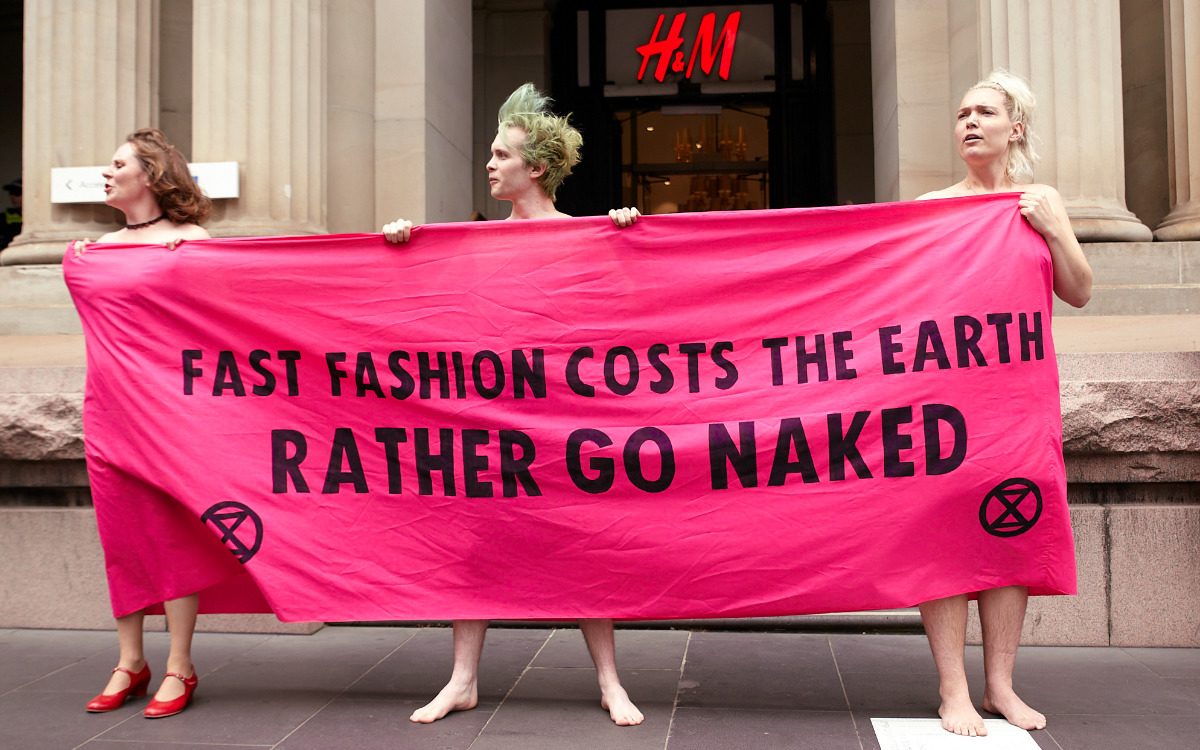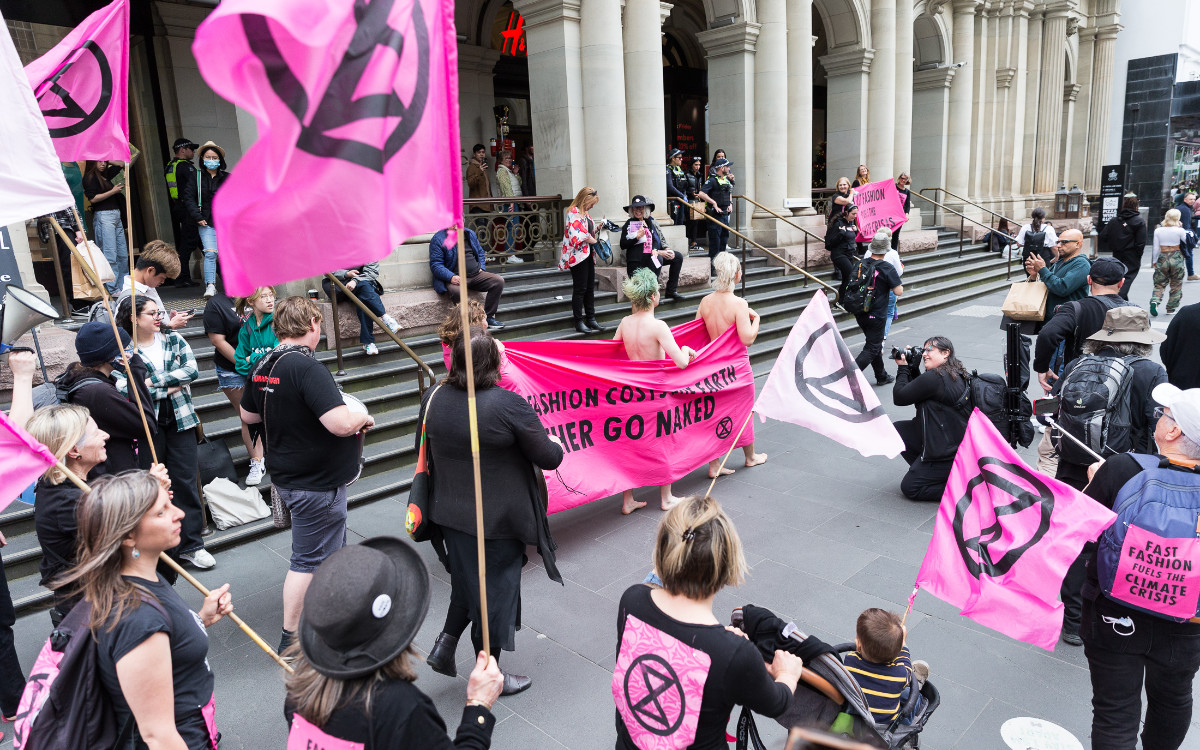
Fast Fashion fuels the climate crisis
XR Australia, 25 Nov 2022
XR Vic Rebels bared nearly all to draw Black Friday shoppers’ attention to the real cost of fast fashion.
Sarah, Jacob and Freya marched through Bourke Street mall wearing only a banner reading “Fast Fashion Costs the Earth: Rather Go Naked” and chanting “We’re nude, we’re rude, fast fashion means we’re screwed” and “Less fast fashion, more compassion.”
“I’m so sad about the upcoming future, but so excited that there’s still hope,” said Jacob.

Fast fashion is responsible for 10% of the world’s carbon emissions, producing billions of tonnes of carbon gases – more than those from air travel and shipping combined – making this industry one of the world’s worst offenders.
85% of fast fashion garments are tossed out every year. This throwaway mentality is encouraged by brands pushing micro-trends which are only considered fashionable for a short time. These clothes aren’t made to last, but only designed to be worn a handful of times before being discarded.
Of course, these clothes aren’t being manufactured sustainably. Textile dyeing pollutes waterways with toxic waste, cotton production uses pesticides and high volumes of water, and two-thirds of garments use synthetic fabric which are made from oil and are responsible for 35% of the microplastics that end up in our oceans.
Worst-offending brands include H&M, Zara, Uniqlo, and Cotton On, some of which also engage in greenwashing.

XR Vic Activists in the H&M store in Bourke Street Mall
Fast fashion is also bad for human beings. The supply of cheap clothes relies on cheap labour in developing countries, with underpaid workers subjected to dangerous conditions.
A recent analysis of the fashion industry’s emissions noted that:
...”despite the growing urgency for dramatic absolute emissions reductions across all industries and geographies, the sector continues to maintain close ties to the fossil fuel industry, through synthetic fibers made from oil and fracked gas, the ongoing practice of burning coal for heat at garment factories, and fashion manufacturers’ continued reliance on fossil fuels for electricity.”
> Fashion brand emissions are rising. Again.STAND.Earth, October 31, 2022

We can help end the cycle of over-consumption by:
- Only buying clothes we absolutely need
- Swapping clothes with friends
- Shopping at secondhand stores
- Mending and repairing clothes we already have
- If buying brand-new - choosing biodegradable fabrics such as linen, hemp, bamboo and/or organic cotton
- Researching manufacturers before buying, and only choosing brands that manufacture clothes sustainably and pay workers adequately.
However there’s a limit to what individuals can do.
The pollution from the fast fashion industry will only be checked when brands go beyond words and promises and make drastic cuts to their supply chain emissions.
The top photo in this article is by Danielle Judd. All other images are by Ari Hatzis